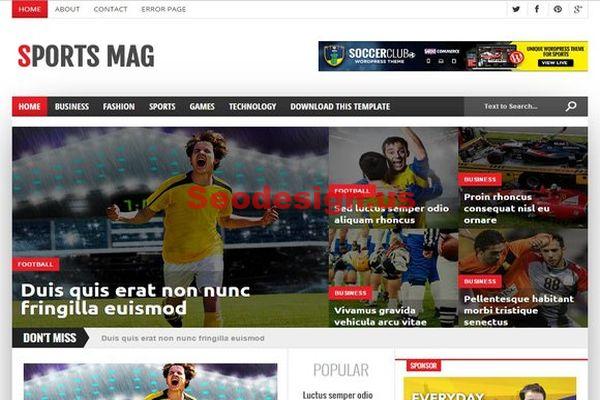It’s a holiday for shoppers and sellers alike. As more and more consumers make their purchases online, Black Friday (along with Cyber Monday) has become a major windfall for ecommerce store owners.
Yet, sadly, as many shoppers rushed to get the hottest door buster deals from their favorite online retailers, the enterprise ecommerce platforms used by the store owners folded under the weight of increased web traffic. Small businesses aren’t the only ones at risk. In the past few years some of the biggest online retailers have crashed due to network capacity including Macy’s, Target,Neiman Marcus and Best Buy.
This is obviously bad news for sellers. You want to drive buyers to your site, but if the increased traffic impedes your ability to sell, everyone suffers. In fact, a recent survey found that nearly 50 percent of adults would find another online shop if the load times for a mobile site took more than three seconds!
Don’t let this happen to you. Below are a few examples and causes that can insulate your business against traffic overload.
DDoS Disasters
There are several ways traffic can overwhelm enterprise ecommerce platforms. For example, Distributed Denial of Service (DDoS) attacks can cripple a network using nefarious and fraudulent web traffic. Hackers enlist an army of malware-infected computers, also known as a botnet, to flood a specific website so that legitimate visitors cannot access your store.
On average, a DDoS attack can cost roughly $20,00 per hour and can run for as many hours as the hacker sees fit.
Macy’s Day Blockade
This year, many Macy’s shoppers visited the retail giant’s webpage for a little retail therapy, only to find a warning message:
“Sorry, shoppers! We’re currently experiencing heavier traffic than normal. To make sure everyone gets the best shopping experience possible, we’re asking new shoppers to wait approximately 10 seconds, and then we’ll refresh your browser and welcome you in.”
How many sales do you think they lost when shoppers saw this message? How many consumers decided to spend their money at a competitor’s site? While the “temporary shopping jam” warning provided a phone number for customers to continue shopping, it’s likely that online users wanted to complete their order online, rather than spend their time on the phone.
As you might expect, frustrated shoppers took to social media to complain about the Black Friday blackout and slowed ability to access the site.
Best Buy, Bad Connection
In 2014, Best Buy suffered sporadic website issues through the Thanksgiving weekend, creating headaches for many of its online shoppers. Consumers aired the grievances on Facebook and Twitter.
While Best Buy worked to spin the incidents as evidence of their increased holiday demand, it probably did more to harm their reputation as a reliable company.
Off Target
In 2015, Target offered a deal their customers just couldn’t refuse: 15 percent off nearly every item online. Excited Cyber Monday shoppers swarmed the website resulting in record online sales for the retailer.
“But that success was a double-edged sword,” says Forbes writer Phil Wahba, as many customers were prevented from accessing the site due to overwhelming user requests. Luckily, this year was much smoother as Target experimented with digital waiting lines, network stress tests and extending the deals from early Sunday to late Monday night.
Don’t Get Caught Slipping
Whether you are a small company or an ecommerce giant, you can hardly afford to lose sales, especially as rivals redouble the efforts to win with coupons, daring discounts and BOGO deals. If you want your Black Friday sales to go off with a hitch, consider comparing enterprise ecommerce platformsthat pride themselves on handling excessive traffic. Otherwise you may be seeing some unhappy customer reviews on your social media pages too. Thankfully, there are a few ways to combat this:
In-Store Discounts:Cyber Monday was originally created to take advantage ecommerce without cannibalizing in-store sales. But today’s customers prefer to blend their buying habits and many stores are following suit. If you are looking to alleviate some of your Cyber Monday traffic, think about offering the same deals in store.
Deal Distribution:Similarly, many store owners are spreading their sales into a weekend-long extravaganza. Instead of offering door busters on Black Friday, consider portioning discounts by day for various products. Why not ease network strain by offering deals on women’s clothing on Saturday and men’s on Sunday?
Virtual Waiting Lines: Virtual waiting lines purposefully delay user requests so fragile networks can soft-pedal incoming traffic. Some businesses, especially ticketing companies, use this technique to keep their website from crashing or to manage high demand for a limited number of products i.e. concert tickets.
Stress Testing: Here’s a technique that will require the assistance of your network provider or IT team. If you are worried your website might buckle during the holiday rush, you should try sending a high number of requests to your website in a test environment to see how much it can take. This will inform you about your breaking point and whether you need to upgrade your systems.
Not only will these techniques facilitate a faster, more resilient network able to handle heavy traffic and increased service requests, it will also lead to happier customers and a better holiday season for all.





